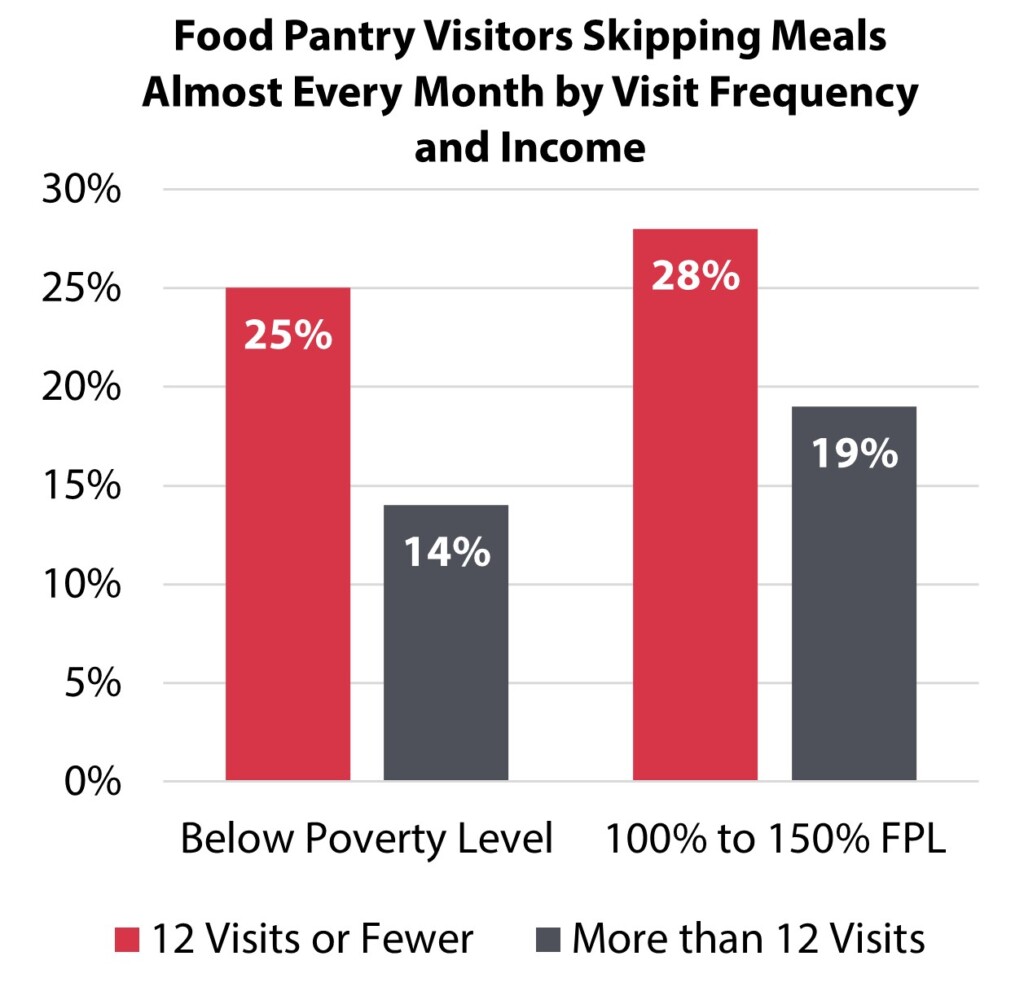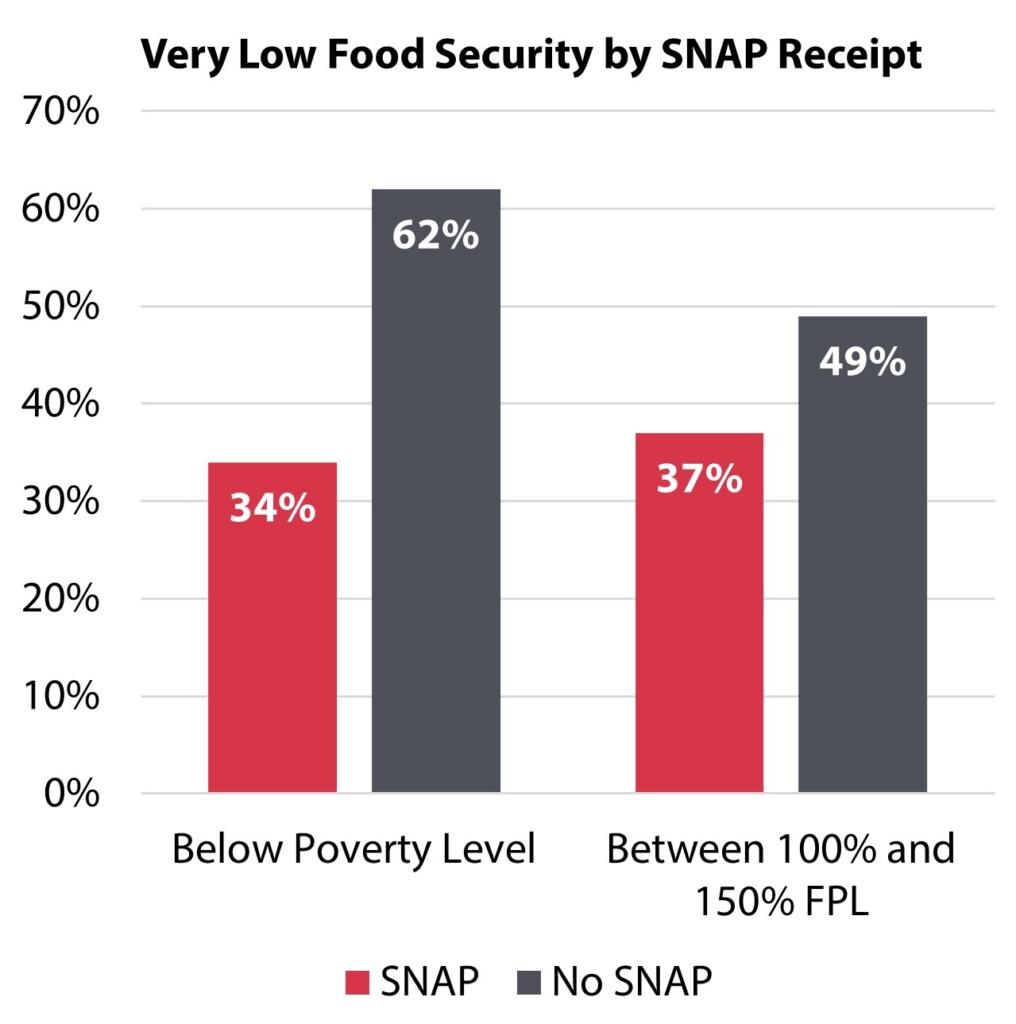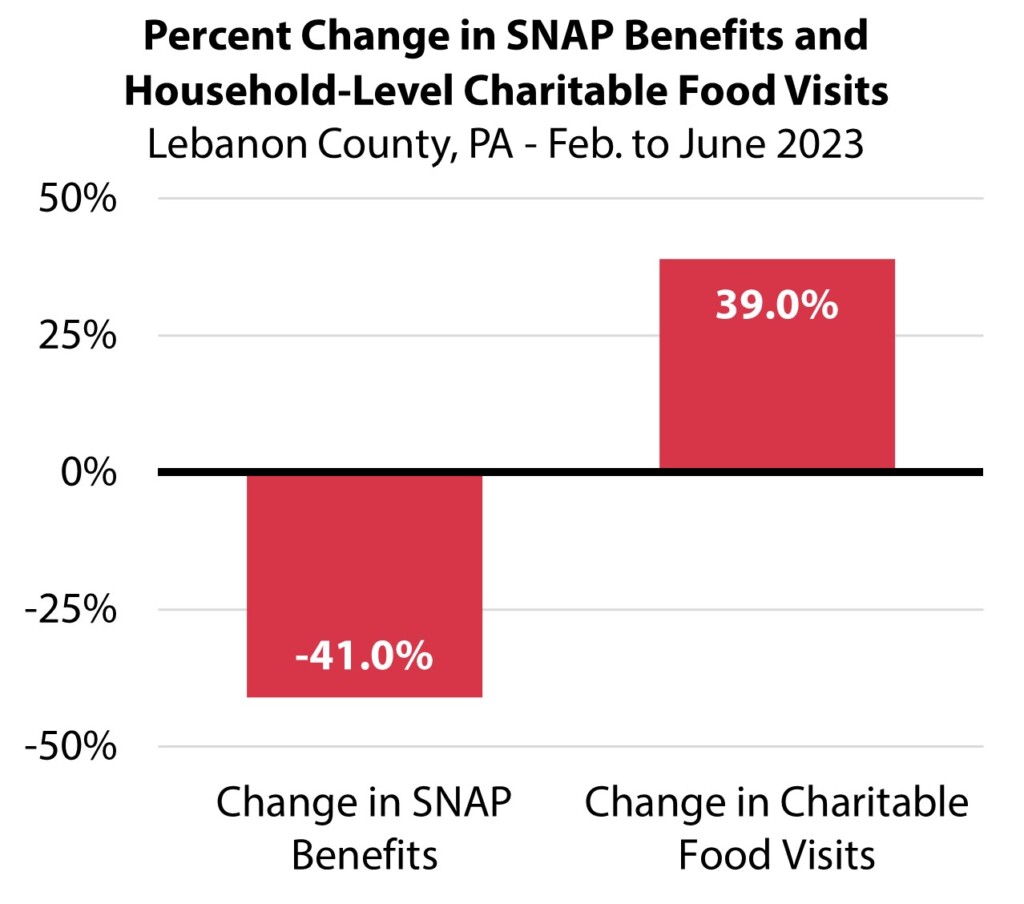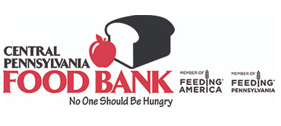Lebanon County Data Bytes
Pantry Visits, Very Low Food Security, and SNAP
In this month’s Policy Blog, CPFB Policy Research is pleased to present Data Bytes, a brief look at small but compelling pieces of data captured as part of our larger Community Hunger Mapping projects. The following Bytes all stem from our forthcoming Lebanon County Community Hunger Mapping Final Report – enjoy the sneak preview!
As part of the Community Hunger Mapping process, CPFB Policy Research uses multiple tools to collect data about the charitable food system, including paperless food pantry service records and surveys of neighbors who visit food pantries. Paperless pantry service records simplify intake for visitors and pantry worker while also allowing CPFB to gain demographic data and understand more about charitable food demand. Neighbor surveys are more in-depth and ask pantry visitors about several topics, including income, eviction, food security status, and more. The following Data Bytes are drawn from paperless pantry records and survey response data from Lebanon County gathered in early 2023 as well as publicly available SNAP data. All three are the results of innovative analyses that provide more insight into the experiences of those who utilize the charitable food network than ever before.
The graph at right shows that the number of times a household visits a food pantry in a year has a substantial impact on a household’s food security status as measured by their reported frequency of skipping meals. Skipping meals is a key indicator of very low food insecurity, the most severe form of food insecurity.
Households below the poverty level are 44% less likely to report skipping meals every month if they visit a food pantry more than 12 times in a year. For those between 100% and 150% FPL, visiting a food pantry more than once a month cuts their likelihood of skipping meals often by 32%, though these households remain more likely to skip meals than those below the poverty level.
While this finding is in some ways unsurprising – it logically follows that individuals who access the charitable food network more often are less likely to experience very severe food insecurity – it is the first time that it has been shown in CPFB data, and it has important policy implications for the charitable food network. For example, this data presents a compelling argument that agencies who have the capacity should work to serve neighbors more than once a month.


Turning to SNAP participation, CPFB neighbor survey data shows that it, like charitable food assistance, has a meaningful impact on experiences of food insecurity. The chart at left shows that Lebanon County pantry visitors under 100% FPL who participate in SNAP are 45% less likely to face very low food security. For households between 100% and 150%, the effect is less dramatic, likely because households above the poverty line receive smaller amounts in SNAP benefits than those below, but very low food security rates are still 24% lower for SNAP participants in this income group than for non-participants. This finding aligns with national research on the effect of SNAP participation and demonstrates that at a local level, SNAP outreach and enrollment assistance at pantries would be an effective way to reduce very low food security.
Finally, other data collected as part of Lebanon County Community Hunger Mapping shows how closely linked SNAP and the charitable food network are. As part of its response to the COVID-19 pandemic, the federal government implemented a program flexibility for SNAP called Emergency Allotments, which allowed participants to receive the maximum program benefit for their household size, regardless of the amount for which they would ordinarily have qualified. Households who already qualified for the maximum benefit received an additional $95 in benefits per month.
The SNAP EA program expired in February 2023, and in Lebanon County, average SNAP benefits dropped about $108 per person per month, or about 41%. As shown in the graph above, this 41% decrease in SNAP benefits between February and June 2023 was directly correlated with a 39% increase in household-level food pantry visits in the same time frame. While the finding that charitable food visits increased is unsurprising – households are trying to ensure they have enough to eat, so they utilize the charitable food system more to make up for the loss in SNAP benefits – the magnitude of the increase in charitable food visits in Lebanon County is staggering and this data provides a clear demonstration of the importance of SNAP to neighbors who face food insecurity.

